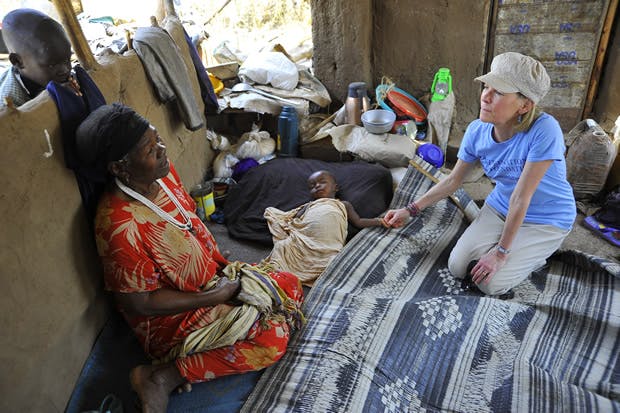The Kakuma refugee camp in Northern Kenya, one of the largest refugee camps in the region, is more than 20 years old and home to more than 100,000 people, mostly from Somalia and South Sudan. Women and children account for 84% of the population.
Last month, I traveled to the Kakuma camp to see firsthand the life-saving work of the United Nations and its partners.

The day I visited, more than 1,500 people came across the border into Kenya. Most refugees arrive with very little money or belongings, and UN agencies and their partners work in lockstep to address their needs: providing transportation from the border to the camp, as well as shelter, food, anti-malaria bed nets, and medical attention.
I left the Kakuma camp with five important lessons:
1. The Resilience of Refugees: The families living in the camp impressed me with their dignity, resilience, and desire to find a safe space for their children to grow up.
There is self-governance within the camp so refugees can represent their needs and rights, and it’s become a place for entrepreneurship, with a thriving marketplace where people sell or barter services from haircuts to Ethiopian food. Refugees are not just residents of the camp, they’re partners in building a community.
2. The Importance of Partnerships: The camp is able to provide for refugees because of true partnership between UN agencies and non-governmental aid organizations on the ground.
In addition to the UN Refugee Agency (UNHCR), the World Food Programme (WFP) provides rations, UNICEF focuses on education, Film Aid helps spread information accurately and quickly, the Lutheran World Federation provides community services, and the International Rescue Committee runs a hospital. My trip was a reminder of the important role that partners can and must play in supporting the UN.
3. The Spirit of Camp Workers: The workers in the camp, who come from both Kenya and places around the world, are filled with compassion and commitment to helping others survive. We need to acknowledge and support their work.
4. Addressing the Root Causes of Conflict: Many refugees spend most of their lives in the camp. I met one woman who came to the camp from Southern Sudan, when it was still part of Sudan. She grew up in the camp for about 25 years and returned to South Sudan when it became a new nation. Sadly, the violence there has forced her to again return to Kakuma.
We need long-term solutions that allow refugees to return home. The global community must work with the UN to tackle the root causes of displacement – and supporting UN peacekeeping is absolutely vital to this effort.
5. We Can Help: Each of us can help the UN help refugees by raising awareness of and resources for the UN’s work. For example, supporters of our Nothing But Nets campaign, working with UN partners, have helped provide 280,000 anti-malaria nets to the camp over the last six years.
The trip was an important reminder that the UN is there for people when they are most vulnerable. I returned from Kakuma with important lessons and a renewed commitment to supporting the UN’s work. We hope you will join us. Follow @unfoundation on Twitter to learn more about our work.



 View All Blog Posts
View All Blog Posts